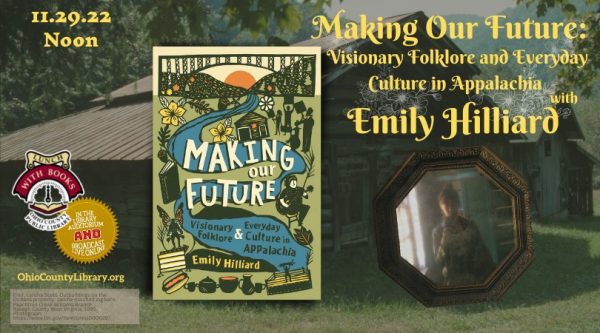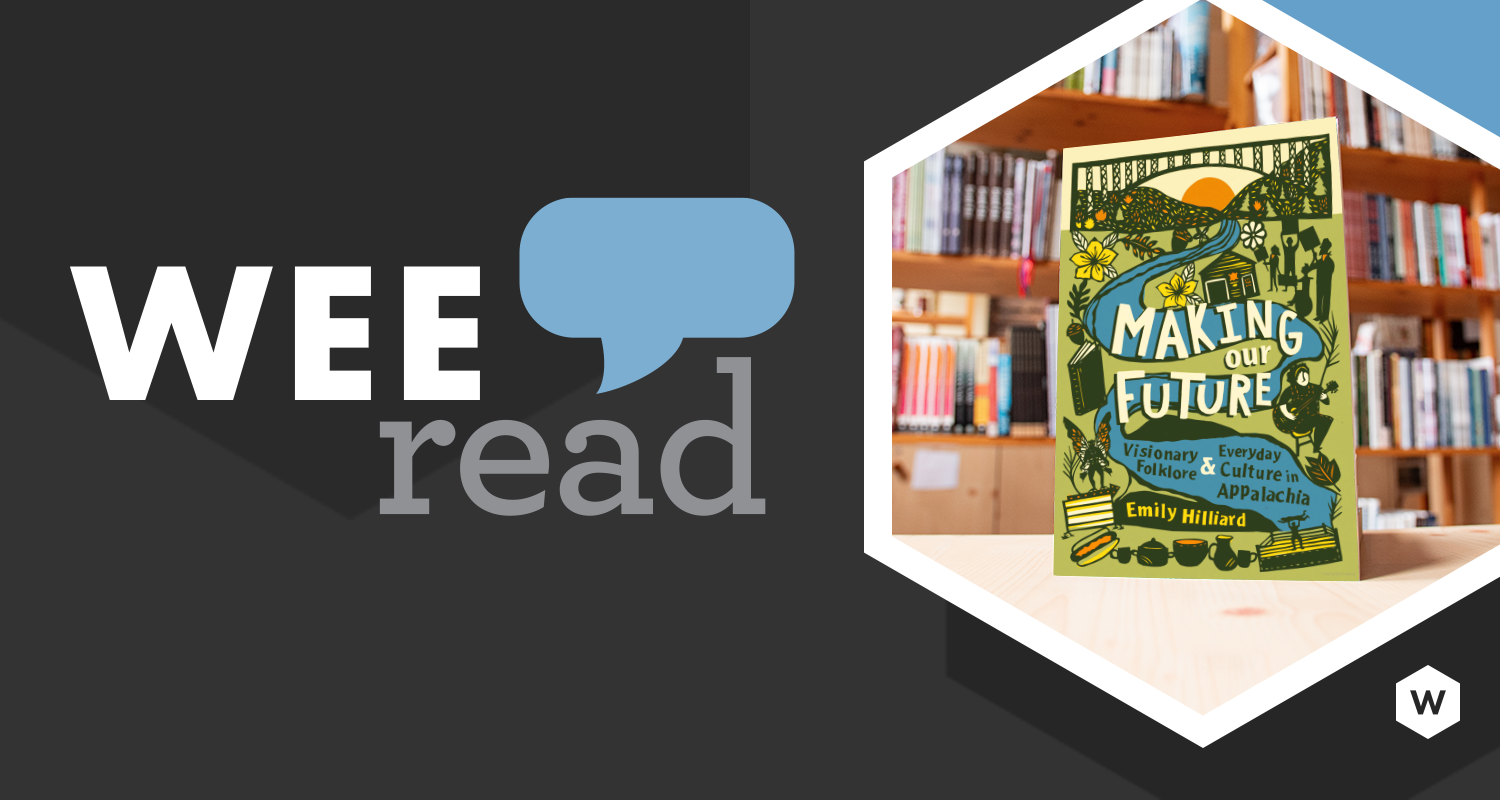In Making Our Future: Visionary Folklore & Everyday Culture in Appalachia, author and state folklorist Emily Hilliard explores West Virginian traditions both old and new. These observations are informed by several years’ worth of travel across the state, during which time Hilliard conducted interviews and observed (and participated) in traditional activities. Hilliard’s experiences are further informed by the wealth of research conducted and recorded by folklorists, historians, archivists, writers, and others before her. Each chapter explores a different facet of folklore in the Mountain State and presents an eclectic range of traditions that includes independent pro wrestling, the 2018 teachers’ strike, and even the West Virginia hot dog.
Before going any further, a few definitions may be required: what does “folklore” mean in the context of this book and what is the task of a state folklorist? Hilliard explains in the book’s introduction that in her field of study the definition of folklore differs significantly from that encountered in the mainstream. Unlike the “mainstream perceptions of folklore as merely myths, legends and tales” Hilliard’s own definition is that folklore is “the art of everyday life…all of the ways a group expresses itself creatively.” The job of the folklorist then is to record and preserve this “art of everyday life” by recognizing “emergent traditions alongside the long-established.”
As the state’s first official state folklorist, Hilliard also notes that one of her goals for the Folklife Program is to “highlight the contributions of populations that have often been ignored in portrayals of the cultural makeup of West Virginia.” We see this in chapters such as “We All Own It,” which explores the “interracial, intergenerational community counternarrative” of Scotts Run, a community that inspired and partially populated Eleanor Roosevelt’s Arthurdale community. Through interviews, oral histories, and archival records, Hilliard calls readers attention to the fact that immigrant and African-American communities have and continue to play a larger part in the state’s history than many realize. These stories are important as they challenge the notion of a “white” Appalachia by showcasing the Eastern European, African-American, and other nonwhite communities that have been present in the state since the 1800s.
Tradition, as Hilliard interprets it, “puts the past and the future in conversation.” We see this in chapters like “The Daughters of Mother Jones,” which describes how the 2018 teachers’ strike built upon the history and tradition of the state’s labor movement by donning red shirts (a nod to the red bandanas worn by striking miners) and by bringing it into the 21st century (sharing their platform through social media and memes). We see it as well in “Wild, Wonderful, Wasteland West Virginia” which explores the state’s past and present through the lens of a (post-apocalyptic) future as imagined in Fallout 76, an itineration of the popular multi-player game Fallout that takes place in the Mountain State.
In order for traditions to continue, a certain level of elasticity is often necessary. The most emblematic example of this can be found in the chapter entitled “Up Here You Use What You’ve Got: Foodways and the Elasticity of Tradition in the Swiss Community of Helvetia, West Virginia.” A small community in a remote region of West Virginia, Helvetia has upheld (and in some instances reimagined) the traditions of its Swiss settlers for decades. Chief among them is Fasnacht (“fast night”), a pre-Lenten holiday that is “an amalgam of the traditional Swiss Fasnacht and Sechelauten, a rite of spring.” The festivities of Fasnacht include creating homemade masks, making fried dough rosettes, and burning an effigy of Old Man Winter.
But “traditional” doesn’t mean “static”: just as its community has evolved and altered throughout the years, so too has Fasnacht and its traditions. In the war years, when anti-German sentiments were strong in America, Helvetians downplayed their Swiss-German roots; in the 1960s, the tradition was revived and reimagined, growing from a local tradition to a tourist attraction. This elasticity helps traditions survive, allowing them to “mutate and evolve as they encounter and enter into dialogue with influences inside and out.” So although Fasnacht has looked different throughout the years, at its heart the tradition has remained.
Making Our Future is available through Amazon, most major bookstores, and through the publisher’s website at The University of North Carolina Press. Published in 2022, Hilliard’s book is arguably the most up-to-date book about Appalachian folklore and culture on the market. You can also check out 55 Strong: Inside The West Virginia Teachers’ Strike, edited by Emily Hilliard, Elizabeth Catte, and Jessica Salfia, which provides an in-depth look at the teachers’ strike discussed in Hilliard’s book (that I also reviewed in 2021!).
Ohio Valley residents will also have a chance to hear Emily Hilliard talk about her book and experiences in person on November 29, 2022 through the Ohio County Public Library’s “Lunch with Books” program. For those who cannot make it in person, the event will also be available to watch live on Facebook Live and other platforms. For more information about the event, check out the page here on OCPL’s website.




